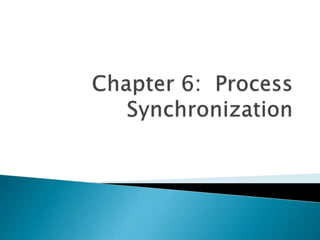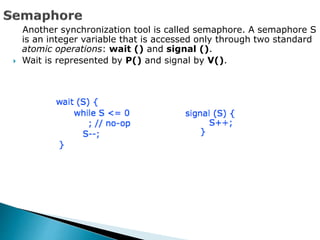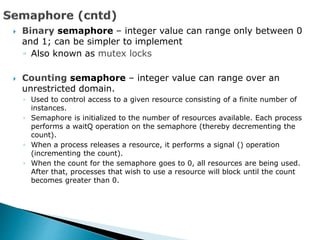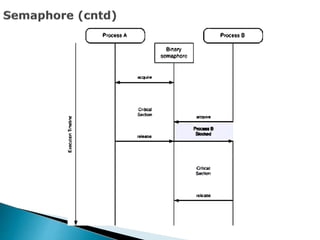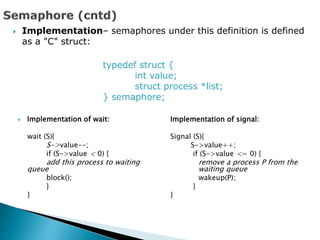This document discusses hardware and software solutions for critical section problems in multiprocessing systems. It introduces the TestAndSet instruction, which atomically sets a variable to true and returns its previous value. This can be used to implement mutual exclusion. Semaphores are also introduced as another synchronization primitive, with binary semaphores functioning similarly to mutex locks. Implementations of semaphores are discussed where processes block rather than busy wait, avoiding wasted CPU cycles. Deadlock and starvation scenarios are briefly described.
